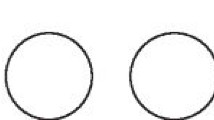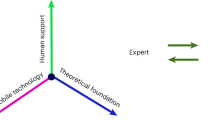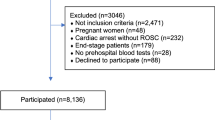Abstract
Data sources
The Cochrane Methodology Register, Medline, Embase, AMED, Biosis, Cinahl, LISA, and Psycinfo were consulted along with researchers who may have carried out relevant studies.
Study selection
Studies were considered eligible if they compared searching by hand with searching one or more electronic databases to identify reports of randomised trials.
Data extraction and synthesis
the main outcome measure was the number of reports of randomised trials identified from searches made by hand compared with electronic searching. Data were extracted regarding the electronic database searched, the complexity of electronic search strategy used, the characteristics of the journal reports identified, and the type of trial report identified.
Results
Thirty-four studies were included. Handsearching identified between 92 and 100% of the total number of reports of randomised trials found in the various comparisons in this review. Searching Medline retrieved 55%, Embase 49% and Pyscinfo 67%. The retrieval rate of the electronic database varied depending on the complexity of the search. The Cochrane highly sensitive search strategy (HSSS) identified 80% of the total number of reports of randomised trials found; searches categorised as ‘complex’ (including the Cochrane HSSS) found 65% and ‘simple‘ searches found 42%. The retrieval rate for an electronic search was higher when the search was restricted to English-language journals, at 62% versus 39% for journals published in languages other than English. When the search was restricted to full reports of randomised trials, the retrieval rate for an electronic search improved: a complex search strategy retrieved 82% of the total number of such reports of randomised trials.
Conclusions
Hand searching is still valuable in identifying randomised trials for inclusion in systematic reviews of healthcare, particularly trials reported as abstracts or letters, those published in languages other than English, along with all reports published in journals not indexed in electronic databases. Where time and resources are limited, however, searching an electronic database using a complex search (or the Cochrane HSSS) will identify the majority of trials published as full reports in English language journals, provided, of course, that the relevant journals have been indexed in the database.
Similar content being viewed by others
Log in or create a free account to read this content
Gain free access to this article, as well as selected content from this journal and more on nature.com
or
References
Glenny AM, Esposito M, Coulthard P, Worthington HV . The assessment of systematic reviews in dentistry. Eur O Oral Sci 2003;111:85–92.
Bickley SR, Harrison JE. How to... find the evidence. J Orthod 2003; Vol:72–78.
Author information
Authors and Affiliations
Additional information
Address for correspondence: Dr Sally Hopewell, UK Cochrane Centre, National Health Service Research and Development Programme, Summertown Pavilion, Middle Way, Oxford, Oxfordshire OX2 7LG, UK. E-mail: shopewell@cochrane.co.uk
Hopewell S, Clarke M, Lefebvre C, Scherer R. Handsearching versus electronic searching to identify reports of randomized trials. Cochrane Database Syst Rev 2007; issue 2
Rights and permissions
About this article
Cite this article
Richards, D. Handsearching still a valuable element of the systematic review. Evid Based Dent 9, 85 (2008). https://doi.org/10.1038/sj.ebd.6400602
Published:
Issue date:
DOI: https://doi.org/10.1038/sj.ebd.6400602
This article is cited by
-
BADERI: an online database to coordinate handsearching activities of controlled clinical trials for their potential inclusion in systematic reviews
Trials (2017)
-
Home Telehealth Uptake and Continued Use Among Heart Failure and Chronic Obstructive Pulmonary Disease Patients: a Systematic Review
Annals of Behavioral Medicine (2014)
-
Methodological quality of a systematic review on physical therapy for temporomandibular disorders: influence of hand search and quality scales
Clinical Oral Investigations (2012)



